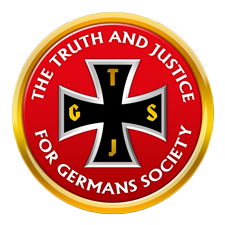Colonel Red Reeder wrote “The Story of the First World War.” It is a concise history with short chapters. Each chapter is devoted to a particular engagement. The author has included photographs and excellent illustrated maps with details of military deployments. This book is a fine introduction to the Great War.
The author, Russell Potter Reeder, Jr., was a decorated soldier for service during World War II. He spent his adult employment in the athletic department of West Point. Reeder was the author of several war histories, historical novels and the Clint Lane West Point series.
There are several significant facts that stand out in reading this history. Many of the same individuals who were famous during the Second World War had participated in the First World War. The Germans were well organized militarily and maintained a certain chivalry during this crisis. The losses of life during that four year struggle were staggering.
Here are some of the individuals mentioned in Reeder’s work who became leaders about 20 years later: Benito Mussolini, Adolf Hitler, Dwight Eisenhower, Erwin Rommel, Harry S.Truman and George S. Patton, Jr. All had served in some capacity during the First World War.
Here are a few of the references made about honorable actions taken by Germans that are mentioned in Reeder’s work.
On Page 40: “The German general asked the Burgomaster of Antwerp for a map so that he could have his artillery fire at places other than where the famous art treasures of the city were hidden. He said he wished to avoid demolishing the famous carillon of ninety-nine bells in the cathedral.”
On Page 87: “French pilot Adolphe Pegoud, the first man to “loop the loop” (he did in 1912), was not afraid to fight anyone in the air as long as his mascot was along. This was a toy penguin, ten inches long, lashed to the wires of his plane. But one day over Alsace the penguin did no good; Pegoud and his Nieuport 210 were shot down. The Germans honored Pegoud by returning the toy penguin and by having white armbands printed for the funeral party. On the armbands in gold letters were the words: FOR WHOM IN COMBAT FOR HIS FATHERLAND, THE FALLEN FLIER PEGOUD IS HONORED BY HIS ENEMIES.”
On Page 94: “Raynal and his men finally surrendered. It was the eighth day of their heroic fight. They staggered above ground and laid down their weapons. So impressed were the Germans by Major Raynal’s courage that they let him keep his ceremonial sword, which he wore in captivity. The Germans stood at attention while Major Raynal and his surviving men were marched away as prisoners.”
On Page 171: “Lieutenant Quentin Roosevelt, son of ex-President Roosevelt, was killed in aerial combat. The German press reported, ‘On July 14, not far from the Marne, an American Squadron of twelve battle planes was trying to break through German air defense. A noncommissioned officer in a German flying machine shot down young Roosevelt’s plane over German lines. The remains of the brave young airman were buried with military honors.’”
On Page 182: “Sir: The suffering of your wounded men can be heard in the German lines. We are appealing to your humane sentiments to stop. A white flag shown by one of your men will tell us that you agree to these conditions. Please treat this soldier as an honorable man. We envy you.”
There is a chapter about the Tennessee native, Sergeant Alvin C. York, and his heroism in battle. York was a humble Southerner. It appeared that not all of our American officers behaved themselves with humility in spite of the fact that British and French troops had been engaged in fighting for their survival three years before our forces even touched upon European soil.
It is interesting to note that one cause for the defeat of Germany was blamed upon a Communist revolution headed by Dr. Karl Liebknecht. Not many years after Germany surrendered, Adolf Hitler rose to power promising to drive those Communists out of Germany. This was one of the stepping stones leading into another war.
Between 12 and 15 million humans died during the First World War. The Germans lost about three million people while the British lost at least one million individuals. Americans joined up at the end of the fight and still lost about 81,000 soldiers in this bloodletting.
My copy of “The Story of the First World War” is hardbound and contains 243 pages with four pages of photographs and 20 map illustrations. It was published by Duell, Sloan and Pearce of New York in 1962. Used copies are available on the website of www.abebooks.com.
The German Fokker was considered to be the best airplane available in 1915. British pilots called themselves Fokker Fodder and a great deal of fodder certainly got chewed up during that First World War.
Nancy Hitt
2008



